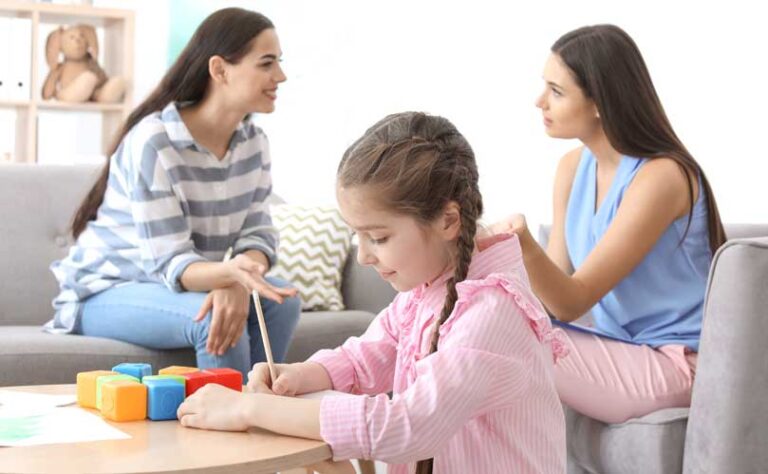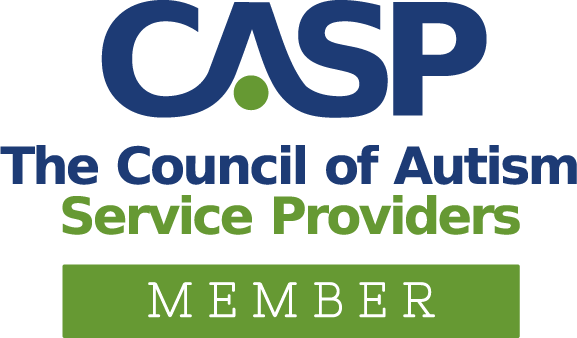If you’ve done any research on ABA therapy as a treatment for autism, you’ve probably seen letters after people’s names, like BCBA (Board Certified Behavior Analyst) and RBT (Registered Behavior Technician). Attached to those letters are the well-trained professionals who help people with autism deal with challenges in their lives.
In our previous article, “What Is a BCBA?” we revealed what Board Certified Behavior Analysts do. In this article, we’ll explore the role of Registered Behavior Technicians in ABA therapy.
What Is a Registered Behavior Technician?
An RBT works under the supervision of BCBAs to help in ABA therapy. They are specially certified to work directly with those with autism.
An RBT does not have an advanced degree. However, they are required to take additional coursework in ABA principles, implementation of different treatment methods (i.e., discrete trial training, task analysis, etc.), management of challenging behavior, and ethics. This coursework concludes with a certification exam.
RBTs commonly work with people with autism spectrum disorder (ASD). They may work with children with autism, autistic teens or adults.
You can find RBTs working wherever there are autistic individuals. You can find them in a clinic, at home, or in the community, working one-on-one with individuals.
What Does an RBT Do?
BCBAs are responsible for identifying treatment goals and developing a treatment plan. The RBT has a significant role in implementing treatment goals with clients during ABA therapy sessions.
ABA Therapy works on social skills and communication. Treatment goals support individuals with autism to develop and increase socially significant behavior. This may look like supporting individuals to order food at a restaurant or other everyday tasks. An RBT works with the client during an ABA therapy session on skills like these.
An RBT also has a major role in data collection. This will help track and measure the progress of those with autism. For example, RBTs must take data on each program, keep detailed descriptions of treatment plans, how they are carried out, what has been accomplished and what still needs to be worked on.
These detailed plans are crucial to the BCBAs so they can plan for future ABA therapy sessions.
What Is Applied Behavior Analysis (ABA)?
There is no cure for autism. However, ABA Therapy has proven effective in helping people with autism improve their daily lives. ABA therapy works to promote socially significant behavior with positive reinforcement.
According to the Centers for Disease Control (CDC), ABA therapy has become a widely accepted therapy option among healthcare professionals for autism. This can be attributed to the decades of research supporting this evidence-based model.
The primary goal of ABA therapy is to help clients with autism develop the necessary skills to cope with different situations and help them express themselves to others appropriately. ABA therapy can help autistic people do better in school, at home and in professional settings.
ABA therapy helps to get a better understanding of a client’s behaviors and why they occur. For example, a person with autism can have a difficult time appropriately expressing their feelings. As a result, dealing with emotions and communication can be challenging for them. ABA therapy offers tools to improve communication and handle emotions with new behaviors.
Registered Behavior Technicians and ABA Therapy
RBTs and BCBAs work together with the client and their caregivers on a therapy plan that bests fits the person with autism, their needs, and challenges.
Over time, the client will make progress, and these treatment plans will change. As a result, the RBT will support the client to adapt to these new expectations. ABA therapy sessions are much more than helping the client with autism. ABA therapy can help the whole family.
RBTs work closely with families so that the skills learned during therapy can be applied during everyday life. The entire family will learn to communicate more effectively with an autistic family member (and with each other). This can help to create stronger relationships and ease some frustrations around communication.
What to Look for in a Registered Behavior Technician
Great communication skills are vital in a good RBT. RBTs must communicate the progress a client is making with the parents, caregivers, clients, BCBA and others involved in the client’s care.
Organizational skills are necessary for successful RBTs. Sometimes an RBT is responsible for helping prepare materials for the client. In addition, an RBT must observe and record the client’s behavior during an ABA session.
A good RBT must be able to adapt well to different situations. Autistic people can keep you on your toes, and no two clients are the same. What may work well with one client may not work well with the next client.
How to Become a Registered Behavior Technician
To become an RBT, you must complete the Registered Behavior Technician training program, which consists of a minimum of 40 hours of training. Once training is complete, then you are eligible to take the Registered Behavior Technician certification exam.
Many BCBAs choose to become an RBT first, which allows them to gain real-life experience and work closely with autistic people and BCBAs while studying.
What to Look for in an ABA Therapy Clinic
When you are looking for ABA therapy options for autistic children, teens or adults, you want to find an option that will work well for your entire family. Look for a center that focuses on evidence-based techniques and finds playful and fun ways to help clients succeed.
The focus of ABA therapy should not be on trying to change or cure the person with autism but on giving clients alternatives to specific behaviors.
ABA Centers of America can work with your family on a program designed to meet your specific goals. We offer in-clinic and in-home therapy options. Contact us to learn more about how we can help.







